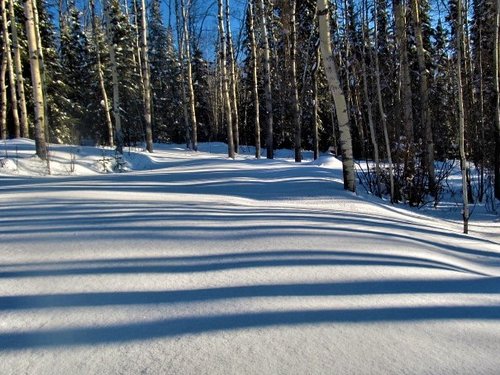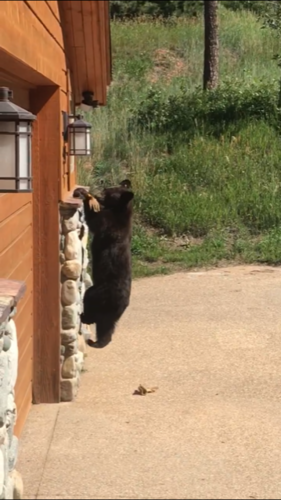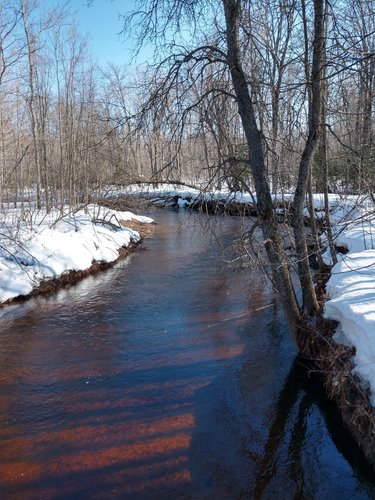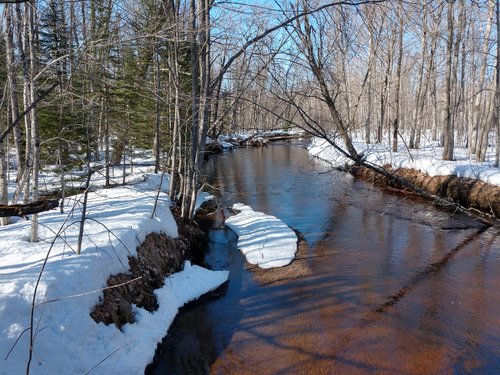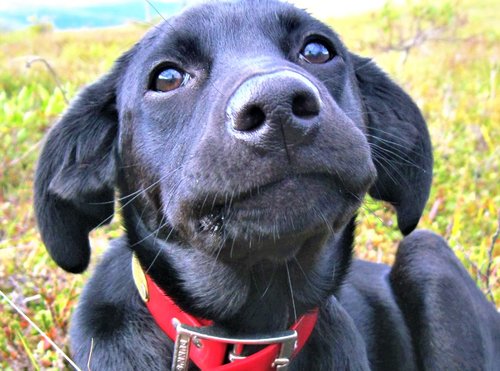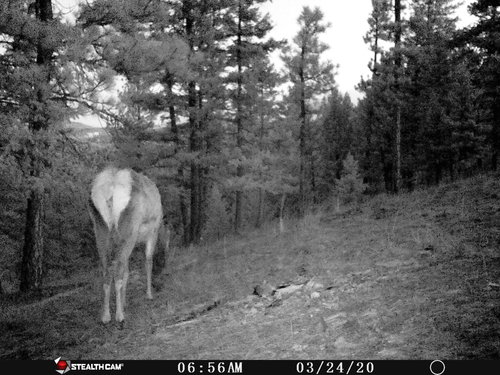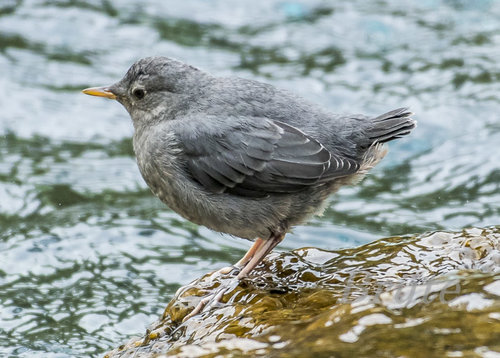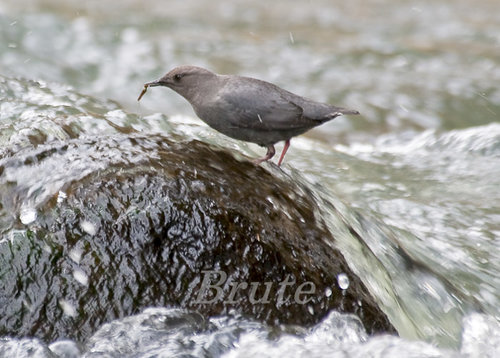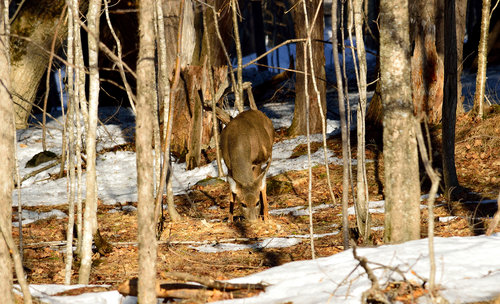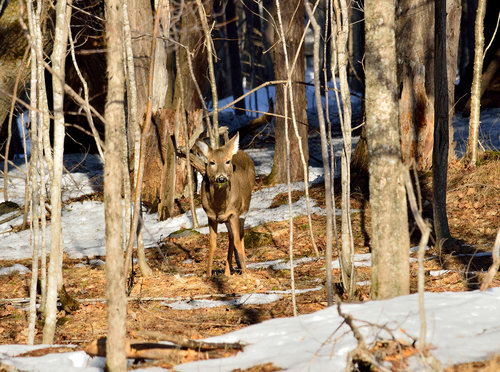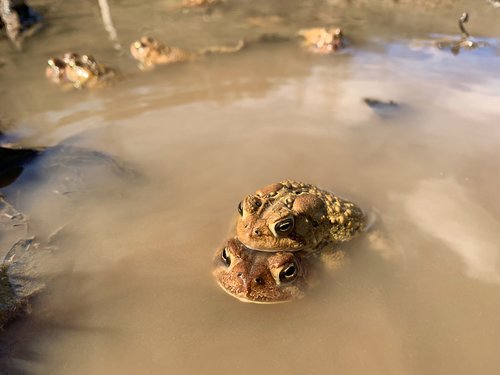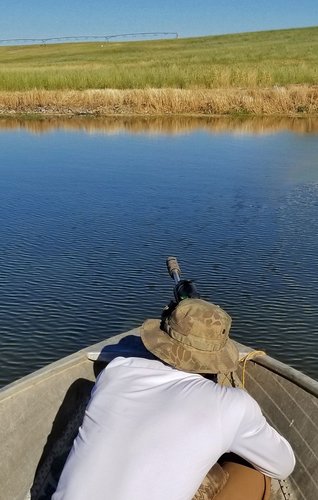Navigation
Install the app
How to install the app on iOS
Follow along with the video below to see how to install our site as a web app on your home screen.
Note: This feature may not be available in some browsers.
More options
You are using an out of date browser. It may not display this or other websites correctly.
You should upgrade or use an alternative browser.
You should upgrade or use an alternative browser.
Pics and more pics...
- Thread starter 1_pointer
- Start date
AggieHunter
Well-known member
huronmtns
Well-known member
AlaskaHunter
Well-known member
BigHornRam
Well-known member
Hummer
Well-known member
Brute, that number rang a bell. July 4, 2015

That swan leg band is a little bigger than the bird bands I've been making lately. Hummingbird bands are not pre-made as they are for other birds. The band numbers come printed on a 4" x 5.5" aluminum sheet, containing 300 unique sets of numbers. To make the bands we cut strips of band numbers with a mini shear. The edges are smoothed then cut to length before forming round, then opened ready to close around the bird's leg. The bands are cut in many sizes from about 5.3mm to 7.9 mm to fit individual birds of different species and sex. Here's a set of 300 bands ready to cut to length and form round. The finished bands are about 1.2 mm high and are formed with special tools to about 1.2 mm inside diameter.

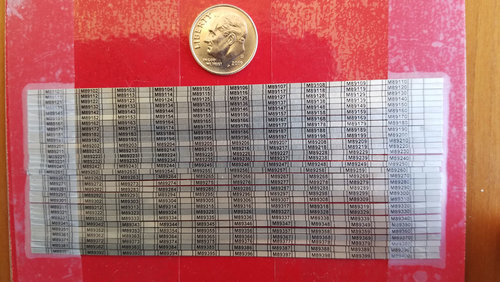
This immature Broad-billed Hummingbird wears an identifying USGS band on his left leg. I banded this handsome fellow last October outside Palisade, CO. Native to Mexico and SE Arizona, he is the 4th Colorado record of the species.
In 2002, I captured the 1st CO record Broad-billed Hummingbird, also outside Palisade. It had been banded in Louisiana, a rare bird there. The 3rd CO record Broad-billed was also banded in Louisiana, about 50 miles from the first record bird.
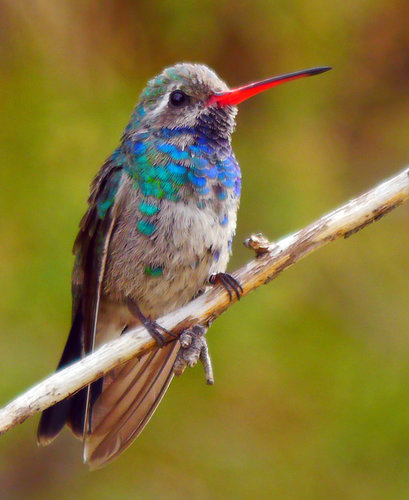
huronmtns
Well-known member
I actually did some banding on the American Woodcock project many years ago. Its funny because this morning I was thinking about doing some more bird banding just around the house. Hmmm, Mist net, bands, band pliers, log book. You just might push me over the edge. Good stuff!
Hummer
Well-known member
Trout fishermen might be familiar with the American Dipper, North America's only aquatic songbird. It lives along streams in the western mountains and dives and swims to feed on aquatic insects and small fish. Related to wrens it sings a melodious song reminiscent of the Northern Mockingbird. And sing it does, summer and winter, rain or shine and on the coldest of snowy days.
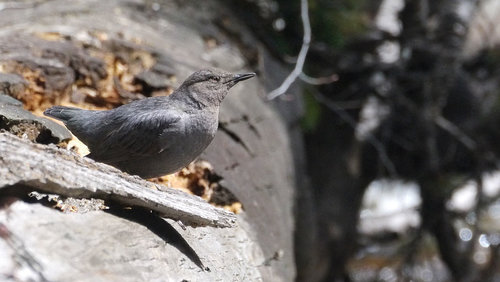
About 35 years ago I developed a nesting box for dippers to expand their populations along streams where nestng sites are limited. I expanded the project and placed dipper boxes on streams throughout Colorado. The boxes must be over water and not accessible to mammalian predators. When the young fledge, they drop into the stream and swim to shore before they can fly well. The boxes can be placed under bridge planking, on bridge abutments, or on poles anchored in the stream.
Here's a dipper box in the stream visible from our dining table. This week a dipper pair have again claimed the box and will begin gathering stream-side mosses to build a cavity a nest inside.
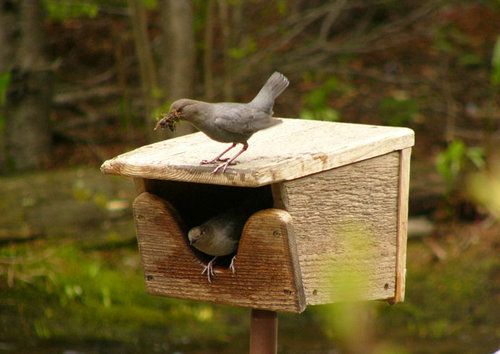
This morning I pulled the snow sled two miles up the valley with gear to mount a new box under a bridge. The forest service replaced the bridge last fall where I'd had a box mounted on the bridge abutment. The new bridges no longer have shelves or cross braces for dippers to nest on. The new installations include rock placed against the abutments. This precludes mounting boxes on the abutments because dippers have to nest directly over water. So, I placed a roof mount box under the bridge.
This particular box is one I made years ago and gave to a mentor, Dr. Ron Ryder, a Fisheries and Wildlife professor at CSU. The box had never been placed but now it will host dippers, and it is dedicated the late Dr. Ryder who helped me band my first dippers.
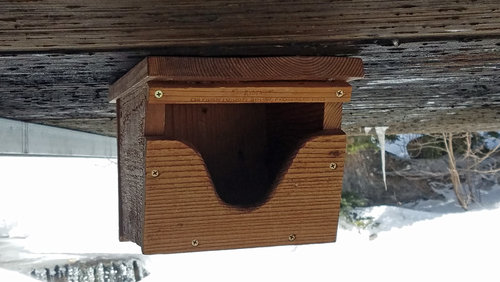
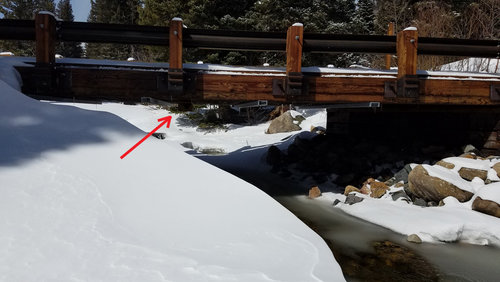

About 35 years ago I developed a nesting box for dippers to expand their populations along streams where nestng sites are limited. I expanded the project and placed dipper boxes on streams throughout Colorado. The boxes must be over water and not accessible to mammalian predators. When the young fledge, they drop into the stream and swim to shore before they can fly well. The boxes can be placed under bridge planking, on bridge abutments, or on poles anchored in the stream.
Here's a dipper box in the stream visible from our dining table. This week a dipper pair have again claimed the box and will begin gathering stream-side mosses to build a cavity a nest inside.

This morning I pulled the snow sled two miles up the valley with gear to mount a new box under a bridge. The forest service replaced the bridge last fall where I'd had a box mounted on the bridge abutment. The new bridges no longer have shelves or cross braces for dippers to nest on. The new installations include rock placed against the abutments. This precludes mounting boxes on the abutments because dippers have to nest directly over water. So, I placed a roof mount box under the bridge.
This particular box is one I made years ago and gave to a mentor, Dr. Ron Ryder, a Fisheries and Wildlife professor at CSU. The box had never been placed but now it will host dippers, and it is dedicated the late Dr. Ryder who helped me band my first dippers.


Hummer
Well-known member
More pics of the dipper box in the stream by our home.
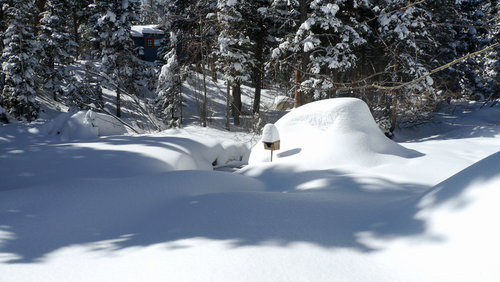
In May before spring runoff.
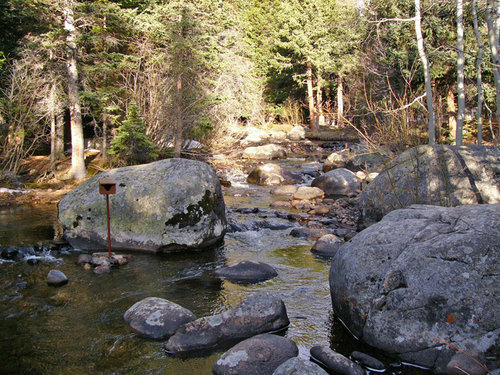
A month later on June 1.
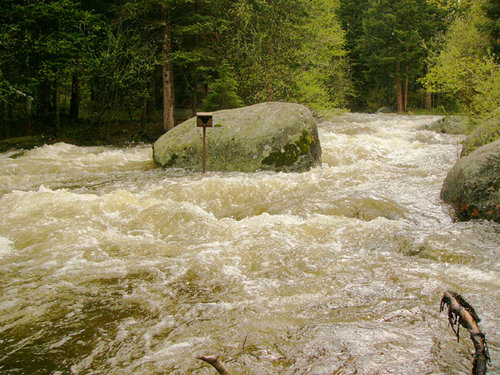
This is in September 2013, during the historic 1000 year flood, moments after the nest box and concrete base were washed away. Fortunately it happened in fall well after nesting.
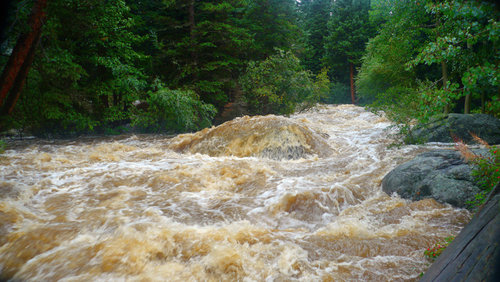
And here's my friend and neighbor Charlie, helping to place a new box and base after the great flood. The heavy concrete base was moved down the ramp with a hand dolly.
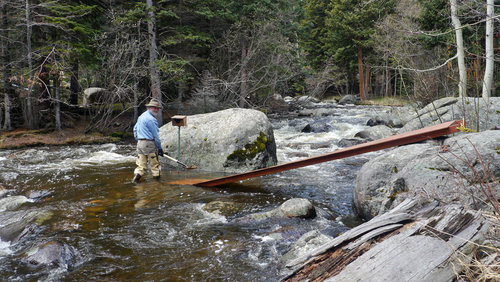
A banded American Dipper.
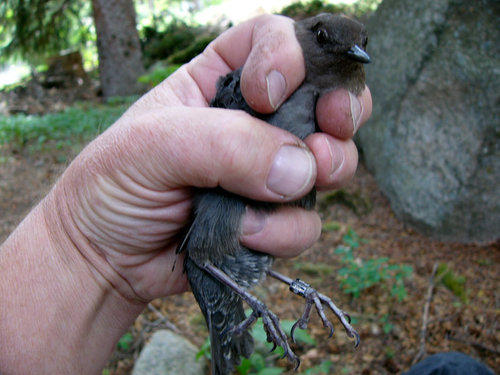

In May before spring runoff.

A month later on June 1.

This is in September 2013, during the historic 1000 year flood, moments after the nest box and concrete base were washed away. Fortunately it happened in fall well after nesting.

And here's my friend and neighbor Charlie, helping to place a new box and base after the great flood. The heavy concrete base was moved down the ramp with a hand dolly.

A banded American Dipper.

Brute
Well-known member
Hummer
Well-known member
Good photo! Water Ouzel is an old common name for them, my grandmother used it. Ouzel referring to the European blackbird for which the dipper was mistaken. In German, der wasseramsel, the water ouzel. Many names around the globe for the 5 worldwide dipper species.
Oh, your bird is a juvenile with the yellow bill and white edges on the primaries and secondaries.
Oh, your bird is a juvenile with the yellow bill and white edges on the primaries and secondaries.
Brute
Well-known member
FAIR CHASE
Well-known member

Hummer
Well-known member
I actually did some banding on the American Woodcock project many years ago. Its funny because this morning I was thinking about doing some more bird banding just around the house. Hmmm, Mist net, bands, band pliers, log book. You just might push me over the edge. Good stuff!
I imagine that finding and catching woodcocks would be quite a challenge, a specialty like hummers and dippers. But a constant monitoring project at your home like a MAPS project is valuable. MAPS, or monitoring avian productivity stations follow prescribed protocols. In Michigan, look to Allen Chartier for advice and possible training. Allen publishes blogs on birds and banding that are worth reading.
huronmtns
Well-known member
Thank you for this information. This will make things happen faster should I decide to get involved again. I will give Allen a call or the biologist for the MDNR that I graduated and shared classes with to get up to current methods.I imagine that finding and catching woodcocks would be quite a challenge, a specialty like hummers and dippers. But a constant monitoring project at your home like a MAPS project is valuable. MAPS, or monitoring avian productivity stations follow prescribed protocols. In Michigan, look to Allen Chartier for advice and possible training. Allen publishes blogs on birds and banding that are worth reading.
This is some language from one of the other people regarding the same study I was helping out with years ago. It just kind of shows people that there can be a return on a scientific work that helps us understand a species better.
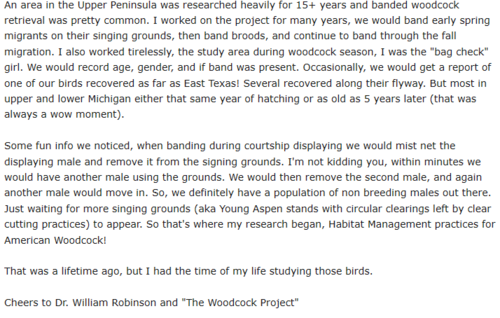
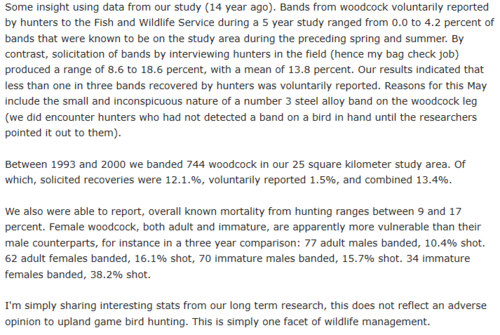
huronmtns
Well-known member
BAKPAKR
Well-known member
fishing4sanity
Well-known member
Straight Arrow
Well-known member
What're ya doin?
Similar threads
- Replies
- 4
- Views
- 224
- Replies
- 75
- Views
- 6K
- Replies
- 0
- Views
- 154




